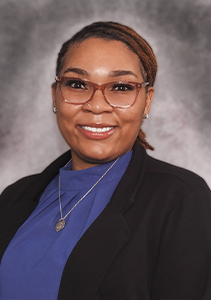Lela Morgan, a nurse, says she lived for years without health insurance after a nervous breakdown in 2005 left her unable to work.
Every 90 days, when she was running low on medications for osteoarthritis and hypertension, she commuted about 45 minutes from her Englewood home to the emergency room at Stroger Hospital. Often, she said, she waited three or four hours. “It depended who was ahead of you,” she said.
But last spring, Morgan’s pastor asked her to help distribute fliers about CountyCare, an early rollout of the expanded Medicaid program made possible by the Affordable Care Act. The 55-year-old took a copy of the literature for herself, filled out the paperwork and got her CountyCare card in the mail.
Now she has a personal physician who, at a clinic 15 minutes from her home, talks with her and renews her prescriptions every 90 days. “You get to know your doctor, and your doctor gets to know you,” said Morgan, whose beaming face appears on CountyCare posters. “Now I don’t worry.”
In expanding Medicaid coverage, the architects of the national health care overhaul hoped to change the way low-income people obtain health care, moving — as Morgan did — away from emergency rooms and into the offices of doctors, where more consistent supervision may improve their health.
But some health care experts say that in many cases it will take time and considerable coaching to change their behavior. People tend to use health care more after they obtain coverage, and those unfamiliar with a traditional doctor-patient relationship may stick with what’s familiar.
Researchers reported last month in the journal Science that low-income Oregon adults who obtained Medicaid coverage through a lottery system were more likely to use the emergency room than those who remained uninsured.
“Having insurance coverage gets you only halfway there,” said Dr. Elbert Huang, associate professor of medicine at the University of Chicago and a former senior adviser for planning and evaluation in the U.S. Department of Health and Human Services. “There’s this huge deficit of knowledge about how to use the health care system that still needs to be overcome before people can benefit from having health insurance. It’s like you’ve given people a license to drive, but they don’t have a map.”
And giving them directions is tricky, said Steven Glass, executive director of managed care for the Cook County Health, which runs CountyCare.
“Using health insurance is much more complicated than using car insurance,” said Glass. “Health insurance literacy is something health plans need to address. It’s something we’ve identified, and we’re still trying to understand the gaps. People don’t know how to use the health insurance and have to be taught and coached through what that is.”
In Cook County, nearly a year into CountyCare, Stroger Hospital still serves just as many ER patients as ever — an average of 383 people per day. More than half lack insurance coverage, and many of them stop by in the evening. Similarly, about a third of patients at the University of Illinois at Chicago’s emergency room come in after 5 p.m., officials said.
“People have figured it out,” said Jeffrey Schaider, chairman of the department of emergency medicine for the Cook County health system. “If you’re working 7 a.m. to 8 p.m. every day, when are you going to see your primary care doctor?”
Of course, even insured people need the emergency room in urgent situations. But visiting the ER instead of a primary care doctor makes sense on another level.
“It’s not an irrational choice,” said Dr. Mark Mackey, vice chairman of clinical affairs in the University of Illinois Hospital and Health Sciences System’s department of emergency medicine. “I don’t have to wait. I can be seen right away. … We’ve really evolved into this rapid diagnosis and treatment center.”
And yet, emergency departments are not set up to serve as medical homes. “Some patients are very complicated,” Mackey said. “They have a long list of medications. Those patients are best cared for by an individual who’s quarterbacking their care.”
Over the next few years, Illinois officials expect the number of people in the Medicaid system to swell from 2.7 million to more than 3 million. In Cook County, 76,000 residents now have health care coverage as a result of CountyCare, officials said Friday.
Public officials and health care providers say the system can handle an influx of newly insured patients, pointing out that many low-income residents had already been receiving services for free, often in hospital emergency rooms. In fact, they expect the federally funded Medicaid expansion to ease financial burdens on providers.
“We have been caring for the uninsured population forever,” Glass said. “What having the insurance has actually done is eliminate all those workarounds that we’ve had to put in place for so long.”
But access to doctors remains a significant issue, said Huang, who published research on the issue last year in the journal Health Affairs. “If there’s a 20- or 30-day wait to get in to see the doctor, you’re going to show up at the emergency room,” he said.
Millions of Americans live in areas where demand for primary care exceeds the supply, Huang said.


